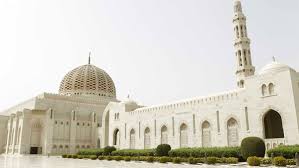
Muscat: Eid Al Fitr may fall on Sunday, May 24, according to astronomical calculations for the Ministry of Endowments and Religious Affairs (MERA).
Astronomical affairs clarified that in the event of clear weather, the moon of Shawwal can be seen on Saturday evening, Ramadan 29 night.
The Astronomical Affairs Department at MERA said: "The astronomical calculations made about the sighting of the crescent of Shawwal 1441 show that on Saturday, Ramadan 1441, corresponding to May 23, 2020, In the city of Muscat, the moon will descend on Saturday, approximately forty-one minutes after sunset, and will be 10 degrees from the sun, in An increase of 8 and a half degrees, and the intensity of its illumination is 0.79 per cent."
"Therefore, if the weather is clear, we will be able, God willing, to see the crescent of the month of Shawal on this day in the Sultanate," the statement added.
And according to Royal decree No 56/ 2020 to determine the days of official holiday, the official holiday of Eid Al Fitr will be from 29th of Ramadan to 3rd of Shawal.
The Sultanate’s approach to declaring the entry of the lunar months does not differ from the approach followed by most of the Islamic world, which is the visual vision of the crescent, whether the vision is with the naked eye or the endoscope, and astronomical calculations are definitely taken in the case of the impossibility of seeing due to the descent of the moon with or before the sunset in the day 29 of the months, and it is used for astronomical calculations in Proof of vision but not interrupted by it; where the testimony of witnesses taken.
How accurate are astronomical observations? To what extent has modern astronomy reached this field?
Salim Al Frisi, head of observatories and perspectives in the Department of Astronomical Affairs, at MERA, explained, "One of the most important factors for the success of the investigation system in the Sultanate, which is supervised by the Department, is the selection and activation of specialized field monitoring devices to monitor the crescent. It has been carefully selected to suit the position of the crescent so that the telescope has a wide field of vision by virtue of the fact that the moon is one of the large bodies in the sky at the same time, the binoculars must be of high quality to take a clear image of the very thin crescent often."
"As well as the quality of the computerized binoculars base used to locate the crescent location, where it must be accurate in determining the location of the crescent and tracking it during the monitoring process without any deviation and these devices are currently available in the department and in the field monitoring committees."
Al Farasi added, "it is known the department of observatories and perspectives has a role in monitoring other objects periodically and not only the crescent."